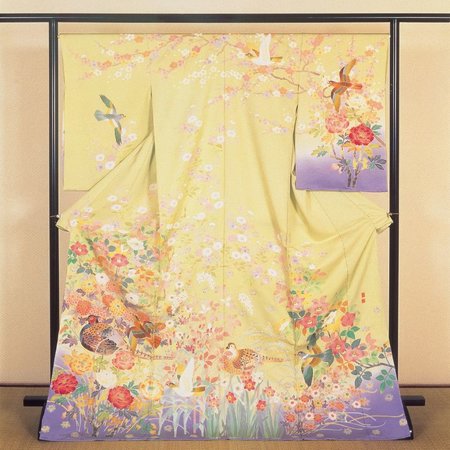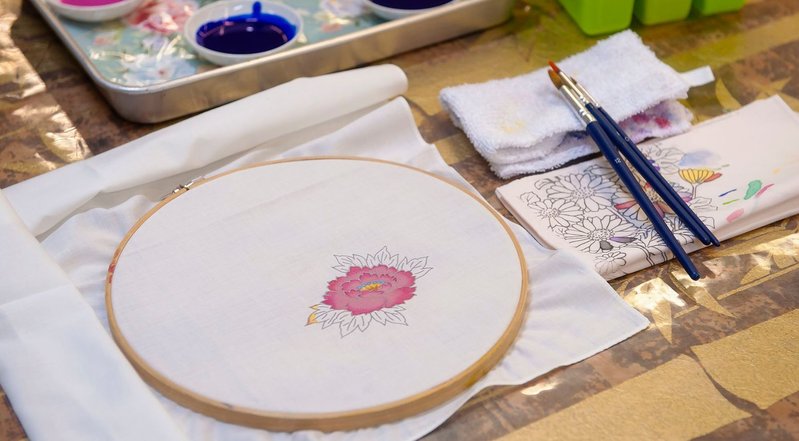One popular tourist activity in Japan is trying out traditional wear such as yukatas and kimonos. But if you want to try a different aspect of this experience, why not go for a kimono fabric-dyeing activity instead such as the Kaga-Yuzen dyeing experience in Ishikawa Prefecture?
Kaga Yuzen is a silk-dyeing technique practised in Ishikawa with roots as long as 500 years ago. Using five basic colours called Kaga-gosai — indigo, crimson, dark green, ocher, and purple — designs are drawn on paper and then transferred to white silk. At present, fabric using this dyeing technique is used to create kimonos, fans, handkerchiefs, and other types of apparel.
This dyeing technique traces its roots back to the 17th century when more intricate patterns and designs on fabric were introduced. Yuzensai Miyazaki, a known designer and dyer from Kyoto’s Tarodaya dyeing house, is said to have contributed greatly to the development and popularity of this practice.
In 1712, Yuzensai travelled from Kyoto to Kanazawa, earning the favour of feudal lords in the Kaga district for his work. This pushed other designers and dyers to adopt the method, leading to its fame up to the present.
What is the Kaga Yuzen?
Kaga Yuzen is a silk-dyeing technique practised in Ishikawa with roots as long as 500 years ago. Using five basic colours called Kaga-gosai — indigo, crimson, dark green, ocher, and purple — designs are drawn on paper and then transferred to white silk. At present, fabric using this dyeing technique is used to create kimonos, fans, handkerchiefs, and other types of apparel.

A sample of the Kaga Yuzen dyeing technique used on a kimono. (Photo from: © Ishikawa Prefectural Tourism League)
The history of Kaga Yuzen silk dyeing
This dyeing technique traces its roots back to the 17th century when more intricate patterns and designs on fabric were introduced. Yuzensai Miyazaki, a known designer and dyer from Kyoto’s Tarodaya dyeing house, is said to have contributed greatly to the development and popularity of this practice.
In 1712, Yuzensai travelled from Kyoto to Kanazawa, earning the favour of feudal lords in the Kaga district for his work. This pushed other designers and dyers to adopt the method, leading to its fame up to the present.

Trying a Kaga Yuzen experience requires time and patience but it’s absolutely satisfying once you see the final result. (Photo from: ©JNTO)



